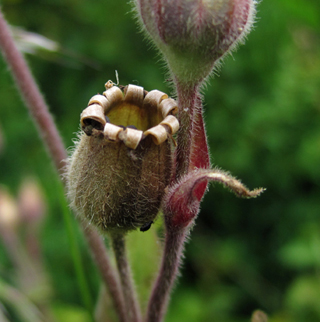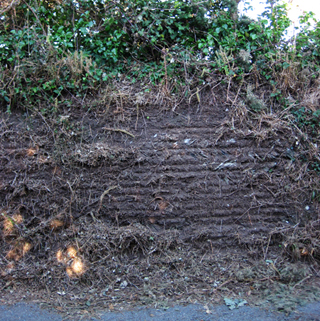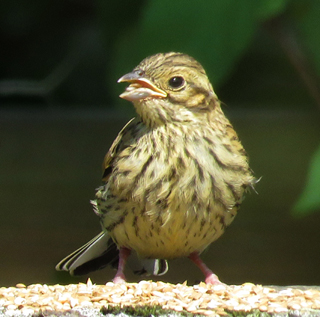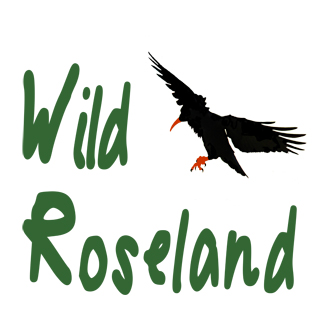 It’s that time of the year when many of the wildflowers have started to run to seed, and the hedgerows have lost a little of the glorious lush colours of spring. But some plants have only just begun to bloom, just as the hedgecutter destroys that reproductive chance.
It’s that time of the year when many of the wildflowers have started to run to seed, and the hedgerows have lost a little of the glorious lush colours of spring. But some plants have only just begun to bloom, just as the hedgecutter destroys that reproductive chance.
In the name of road safety, the seasonal cutting back of the Roseland’s roadside hedgerows has been taking place, as it does elsewhere. However, some of the cutting has been so severe in places this year that the hedge has been scalped to the very stones beneath, almost tearing them out.
 Not only does this treatment wreak havoc on the diversity of plant communities that could richly populate the hedge, it also creates the potential to undermine often ancient stone structures, by exposing them to the weather. There is a life cost to nature and a financial cost to the parish if the wall needs rebuilding. Several walls in the Roseland were subject to collapse last winter after persistent rain and wind undermined them. More may end up facing the same fate this coming winter.
Not only does this treatment wreak havoc on the diversity of plant communities that could richly populate the hedge, it also creates the potential to undermine often ancient stone structures, by exposing them to the weather. There is a life cost to nature and a financial cost to the parish if the wall needs rebuilding. Several walls in the Roseland were subject to collapse last winter after persistent rain and wind undermined them. More may end up facing the same fate this coming winter.
Often it’s our landowners who carry out hedgecutting, not just contractors employed by the local parish or county council. Whoever does it, they inevitably find themselves caught between a rock and a hard place, facing complaints from those concerned about road safety on overgrown dangerous country routes; to be followed by an equal number of complaints from those shocked at the virtual destruction of important roadside habitats.
 The timing of cutting is meant to be held back until the birds have fledged their broods, and hedgerow plants have set seed. However, this takes no account of multi-brooded bird species, such as our Cirl buntings, who continue to breed in hedgerows until the end of August. Cutting also denies many insects valuable pollen and nectar from plants that flower in mid to late summer. The butterfly image here illustrates a Common blue feeding on fleabane in mid August, for example. Cutting hedges back to make roads safer is of course important during the busy holiday season, but it should also be done far more sensitively, with wildlife given equal importance.
The timing of cutting is meant to be held back until the birds have fledged their broods, and hedgerow plants have set seed. However, this takes no account of multi-brooded bird species, such as our Cirl buntings, who continue to breed in hedgerows until the end of August. Cutting also denies many insects valuable pollen and nectar from plants that flower in mid to late summer. The butterfly image here illustrates a Common blue feeding on fleabane in mid August, for example. Cutting hedges back to make roads safer is of course important during the busy holiday season, but it should also be done far more sensitively, with wildlife given equal importance.
(See my Nature Notes article from March 2015, which discusses various aspects and issues of Cornish hedge management).
Chough news
The joy with which we received the news that the Roseland chough parents had managed to fledge three young, has been tempered firstly by the confirmed loss of one choughlet to the resident peregrine falcons. This is a two-edged sword, since we want the peregrines to survive and increase, but preferably not at the expense of the choughs. Secondly, more recent news is that the chough parents have been seen together with only one juvenile, evincing a further unaccountable loss to the family. They have moved away from their original nest site, towards Carne and Pendower, a favoured site for foraging in the past.
Cirl Bunting Reintroduction Project News
 We are up to at least 61 territories and still counting! Not only this, but we are now seeing fledglings (like the one depicted here) being led to new feeding locations by their parents, encouraging the young to start fending for themselves. The sooner the young can be made independent, the sooner the parents can start breeding again before the season is over. Cirls can produce up to three fledged broods in a season in optimal conditions. This makes preservation of hedgerows even more important where Cirls are known to nest.
We are up to at least 61 territories and still counting! Not only this, but we are now seeing fledglings (like the one depicted here) being led to new feeding locations by their parents, encouraging the young to start fending for themselves. The sooner the young can be made independent, the sooner the parents can start breeding again before the season is over. Cirls can produce up to three fledged broods in a season in optimal conditions. This makes preservation of hedgerows even more important where Cirls are known to nest.
Nature Notes is changing – introducing Wild Roseland
 In order to address conservation issues such as that discussed above, a new conservation group has been created specifically for the Roseland. Called Wild Roseland; its aim is to connect people with this special natural environment in ways that promote its protection, conservation and enhancement.
In order to address conservation issues such as that discussed above, a new conservation group has been created specifically for the Roseland. Called Wild Roseland; its aim is to connect people with this special natural environment in ways that promote its protection, conservation and enhancement.
Making efforts to put this into practice are local volunteers who have been busy over the last few months on a number of new projects. Barn owl boxes have been put up as part of the Homes for Wildlife project; sites for the Wild Flower Pollination project have been identified; the Cornish Hedge Habitat Survey is currently underway.
You can now get to meet some of the people involved in Wild Roseland and learn about the group’s aims and objectives at our event stand, which will be present at the following August events:
- St Mawes Carnival, Saturday 6th
- Tregony Heavy Horse Show, Sunday 14th
- Portscatho Regatta, Saturday 27th
We will have information handouts, children’s competition, volunteering opportunities on offer, information about local nature walks, packets of wild flower seeds, and nest box examples to view.
In future, the Nature Notes feature will be renamed Wild Roseland in order to promote, share and facilitate the activities and interests of the Wild Roseland group, with a view to involving as many Roseland people as possible in celebrating this very special place in which we live.
All Photography by Sarah E Vandome, unless otherwise indicated.
Enjoy more Roseland wildlife and landscapes – visit my Heart of Roseland Facebook feature:

